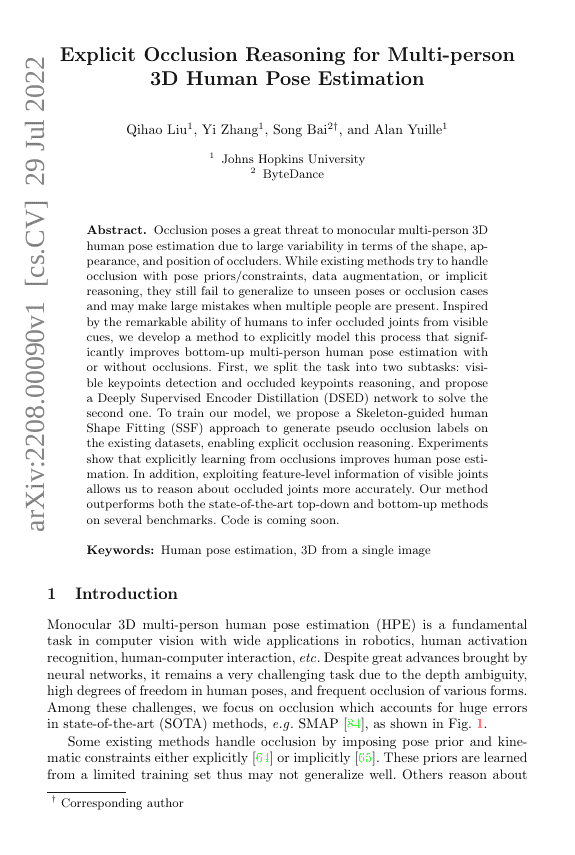Command Palette
Search for a command to run...
Explicit Occlusion Reasoning for Multi-person 3D Human Pose Estimation
Liu Qihao ; Zhang Yi ; Bai Song ; Yuille Alan

Abstract
Occlusion poses a great threat to monocular multi-person 3D human poseestimation due to large variability in terms of the shape, appearance, andposition of occluders. While existing methods try to handle occlusion with posepriors/constraints, data augmentation, or implicit reasoning, they still failto generalize to unseen poses or occlusion cases and may make large mistakeswhen multiple people are present. Inspired by the remarkable ability of humansto infer occluded joints from visible cues, we develop a method to explicitlymodel this process that significantly improves bottom-up multi-person humanpose estimation with or without occlusions. First, we split the task into twosubtasks: visible keypoints detection and occluded keypoints reasoning, andpropose a Deeply Supervised Encoder Distillation (DSED) network to solve thesecond one. To train our model, we propose a Skeleton-guided human ShapeFitting (SSF) approach to generate pseudo occlusion labels on the existingdatasets, enabling explicit occlusion reasoning. Experiments show thatexplicitly learning from occlusions improves human pose estimation. Inaddition, exploiting feature-level information of visible joints allows us toreason about occluded joints more accurately. Our method outperforms both thestate-of-the-art top-down and bottom-up methods on several benchmarks.
Benchmarks
| Benchmark | Methodology | Metrics |
|---|---|---|
| 3d-multi-person-pose-estimation-absolute-on | Liu et al. | 3DPCK: 36.5 |
| 3d-multi-person-pose-estimation-root-relative | Liu et al. | 3DPCK: 79.4 |
Build AI with AI
From idea to launch — accelerate your AI development with free AI co-coding, out-of-the-box environment and best price of GPUs.